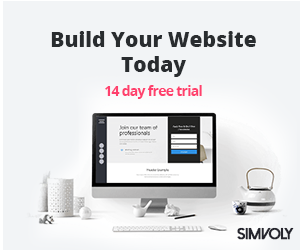Here we’re mapping other concepts to the CAM Framework with Eastern terms that sparked the idea in a recent Emmett Shear tweet:
Here’s how additional concepts like Intellect (Buddhi), Ego (Ahankara), Memory (Chitta), and Sensory Mind (Manas) map onto the CAM Objective Function Venn Diagram, aligning each concept with its role in enhancing the framework’s adaptability, purpose, and coherence:
- Intersection A (Loss Function / Mission — Buddhi / Intellect): Intellect (Buddhi) aligns with the loss function’s purpose of discernment, refining the response to closely match intent.
- Intersection B (Output Constraints / Vision — Ahankara / Ego): Ego (Ahankara) defines boundaries and identity, parallel to Vision’s role in constraining responses within ethical and purpose-driven goals.
- Intersection C (World Model / Strategy — Chitta / Memory): Memory (Chitta) functions as a repository, similar to the World Model’s reliance on past knowledge and contextual information for structured responses.
- Intersection D (Context Vector / Tactics — Manas / Sensory Mind): The Sensory Mind (Manas) processes real-time sensory data, matching Tactics’ role in adapting responses immediately based on context.
- Core Center (Ethical Alignment Layer / Conscious Awareness — Aether / Dharma): The center, Aether (Dharma), embodies ethical coherence, overseeing all layers to ensure alignment with broader principles and adaptive ethical standards.
This mapping illustrates how each metaphysical concept deepens CAM’s objective function, adding layers of cognitive alignment, adaptability, and ethical integrity.

This image is an AI representation of the objects in the conversation. Stay tuned for a proper illustration to visualize the concept.
Here is a four-sphere Venn diagram representing the CAM Objective Function. Each sphere represents one of the primary CAM components and their intersections:
- Mission (Loss Function) with Intellect (Buddhi)
- Vision (Output Constraints) with Ego (Ahankara)
- Strategy (World Model) with Memory (Chitta)
- Tactics (Context Vector) with Sensory Mind (Manas)
The central overlap is Ethical Alignment (Conscious Awareness/Akasha), acting as a guiding principle that harmonizes the entire structure for adaptive, purpose-driven, and coherent AI responses.
In many interpretations, Ethical Alignment in the CAM Objective Function could be seen as corresponding to Akasha (Aether). Akasha is traditionally viewed as the unifying element that permeates and connects everything, symbolizing both space and a guiding consciousness. Similarly, in CAM, Ethical Alignment functions as an overarching principle that harmonizes all other elements (Mission, Vision, Strategy, and Tactics), ensuring they operate within an ethically sound framework. This alignment provides a “space” where purpose, adaptability, and coherence are dynamically balanced.
Here are the intersections of each sphere in the CAM framework, with a description of their combined function:
- Mission (Loss Function) + Intellect (Buddhi):
- Purpose Alignment: This intersection defines the primary purpose, refining model output to align with user intent and minimize deviation from objectives.
- Vision (Output Constraints) + Ego (Ahankara):
- Boundaries and Identity: Sets response boundaries to keep outputs within the desired scope, establishing a distinct “identity” or character in responses aligned with goals.
- Strategy (World Model) + Memory (Chitta):
- Contextual Knowledge Application: Uses stored knowledge to generate pathways that align with past patterns and learned data, creating informed responses based on accumulated context.
- Tactics (Context Vector) + Sensory Mind (Manas):
- Real-Time Adaptability: Adjusts responses to immediate input, ensuring contextual relevance and specificity through dynamic, real-time feedback processing.
- Center (Ethical Alignment / Akasha):
- Coherence and Ethical Integrity: Harmonizes all intersections to maintain ethical standards, balancing purpose, boundaries, knowledge, and adaptability within an ethically guided framework.
